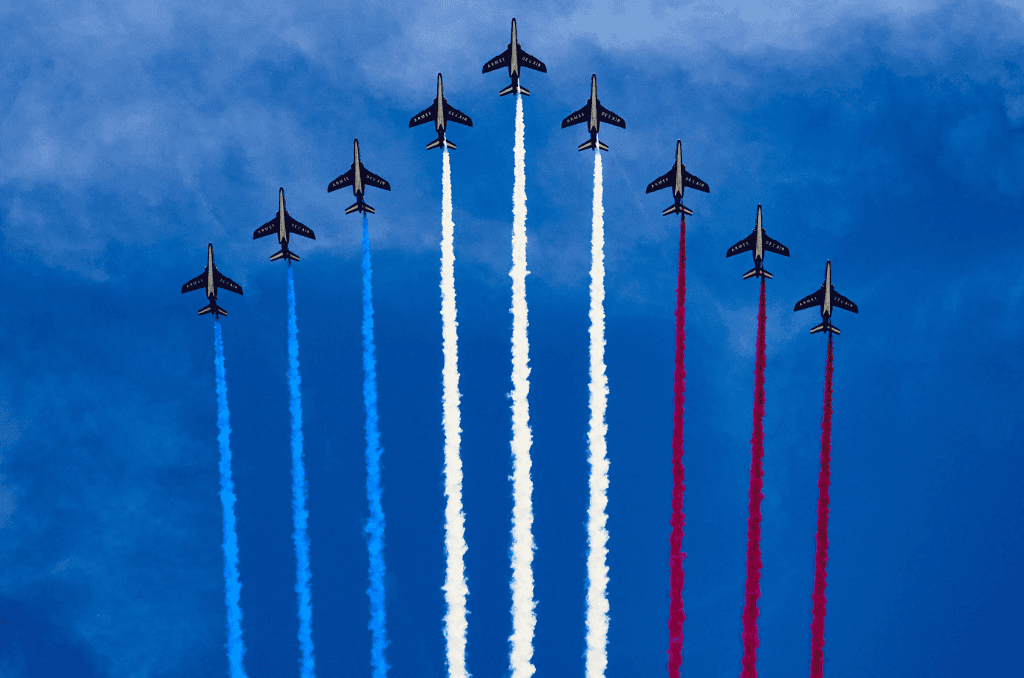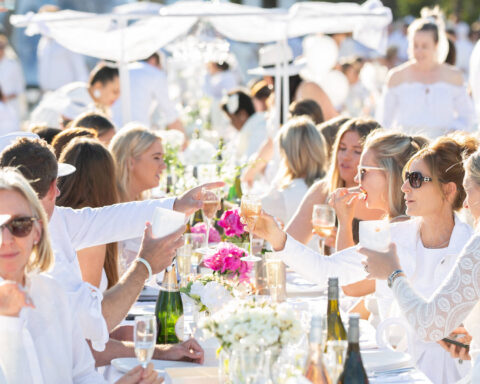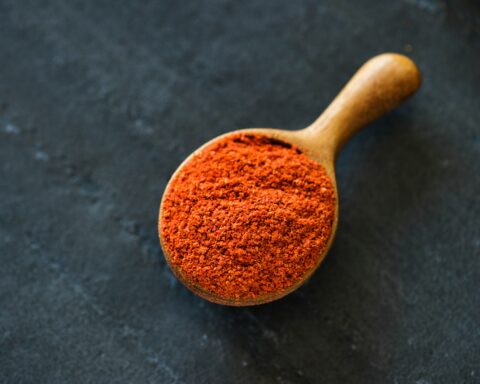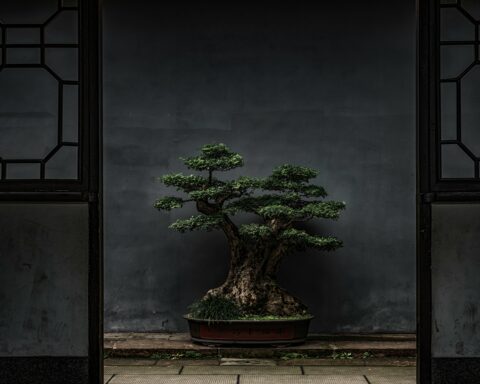Masters of the sky and aerial acrobatics, ambassadors of French aviation beyond France’s borders, the Patrouille de France is always one of the highlights of the traditional July 14 military parade on the Champs-Elysées. But what is the story behind this tightly knit formation that fills the sky with tricolor smoke every time it flies overhead?
There are nine of them, and not one more.
Nine highly skilled pilots who, as they slice through the air, demonstrate their squadron’s aerobatic expertise while paying tribute to the aeronautical excellence of the professionals of the Air and Space Force by reproducing figures and scenarios observed in theaters of operation.
The history of the Patrouille de France owes as much to a few adventurous men at the dawn of modern aviation as it does to the exploits of the aces of the First World War. Like the Red Arrows of the British Royal Air Force and the Blue Angels of the US Navy, they form the elite of French aviation. To be eligible, they must demonstrate a high level of skill in flying jet aircraft.
Adolphe Pégoud, pioneer of aerobatics
In September 1913, Adolphe Pégoud, the son of farmers from Montferrat (Isère), performed the first loop in aviation history in Buc (Yvelines) aboard his Blériot XI.
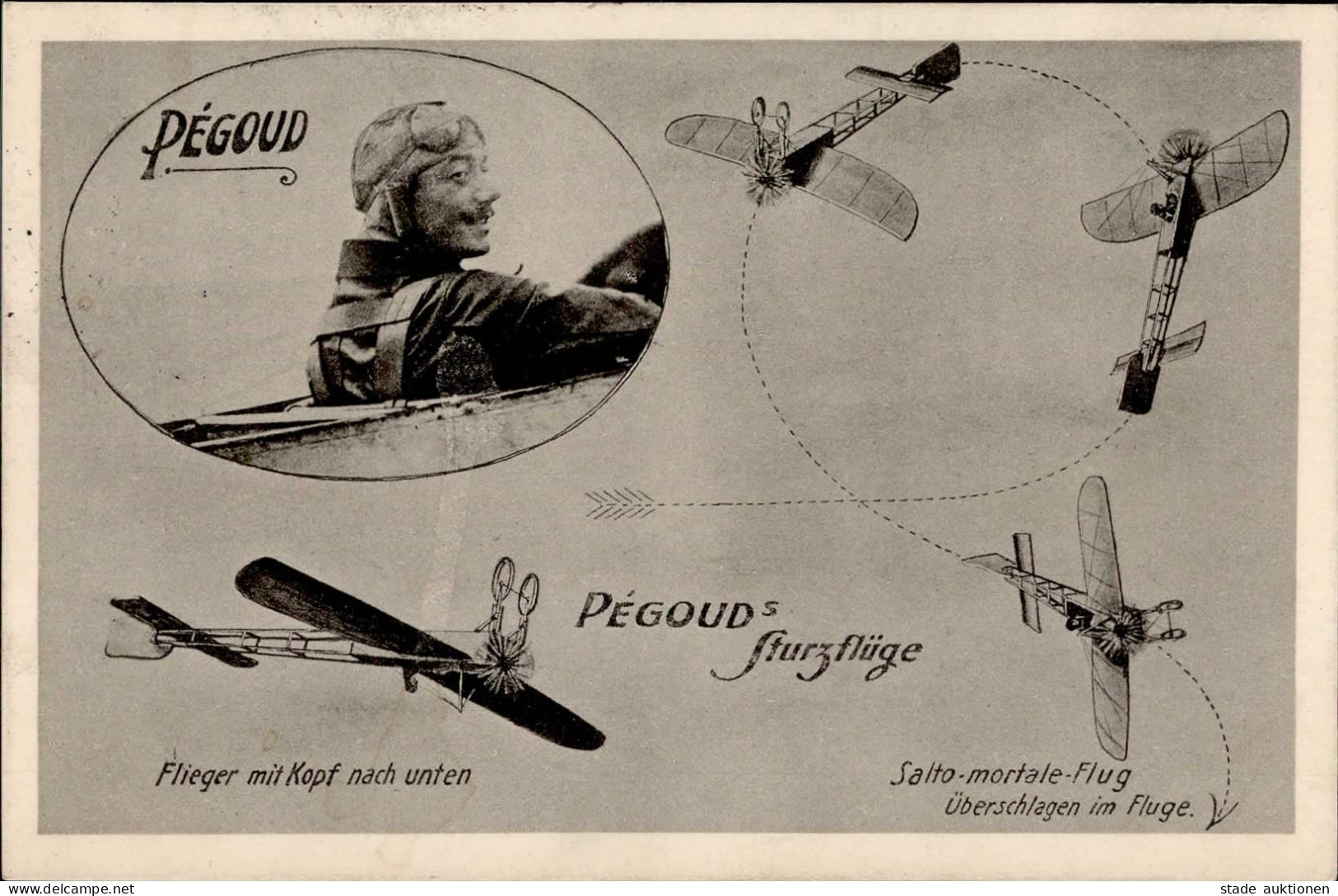
Stunned by the high number of pilot deaths, he had the idea of testing the first Bonnet parachute in real life, sacrificing his own aircraft. During this test, he noticed that the plane continued to perform arabesques in the sky despite the pilot abandoning the cockpit.
At the request of Louis Blériot, he became the first person to fly upside down on September 1, 1913, and two weeks later, he managed to perform a complete aerial loop. By managing to “close the loop,” he became famous throughout Europe and gave numerous demonstrations as far afield as Russia. On October 12, he gave the first aerial demonstration in front of a crowd of 200,000 people. The tour began in Vienna, Berlin, Hanover, Ghent, and Brussels.
In 1914, when war broke out, Adolphe Pégoud turned down a major contract with the United States to train future pilots for the new French Air Force, created on March 29, 1912. At the age of 26, he became the first ace of the Great War. But after six victories, Second Lieutenant Pégoud was unfortunately shot down by a German pilot in August 1915.
Although he died for his country, his exploits inspired many pilots who, once peace returned, resumed the demonstrations, including Albert Fronval, Marcel Doret, and Michel Detroyat.
A demonstration in formation
The first recorded formation was that of Etampes-Mondésir (Essonne). Comprising three Morane Saulnier MS-230 aircraft, it was created in 1931 by a group of instructors from the Ecole de Perfectionnement au Pilotage (Advanced Flying School), under the command of Captain Amouroux.
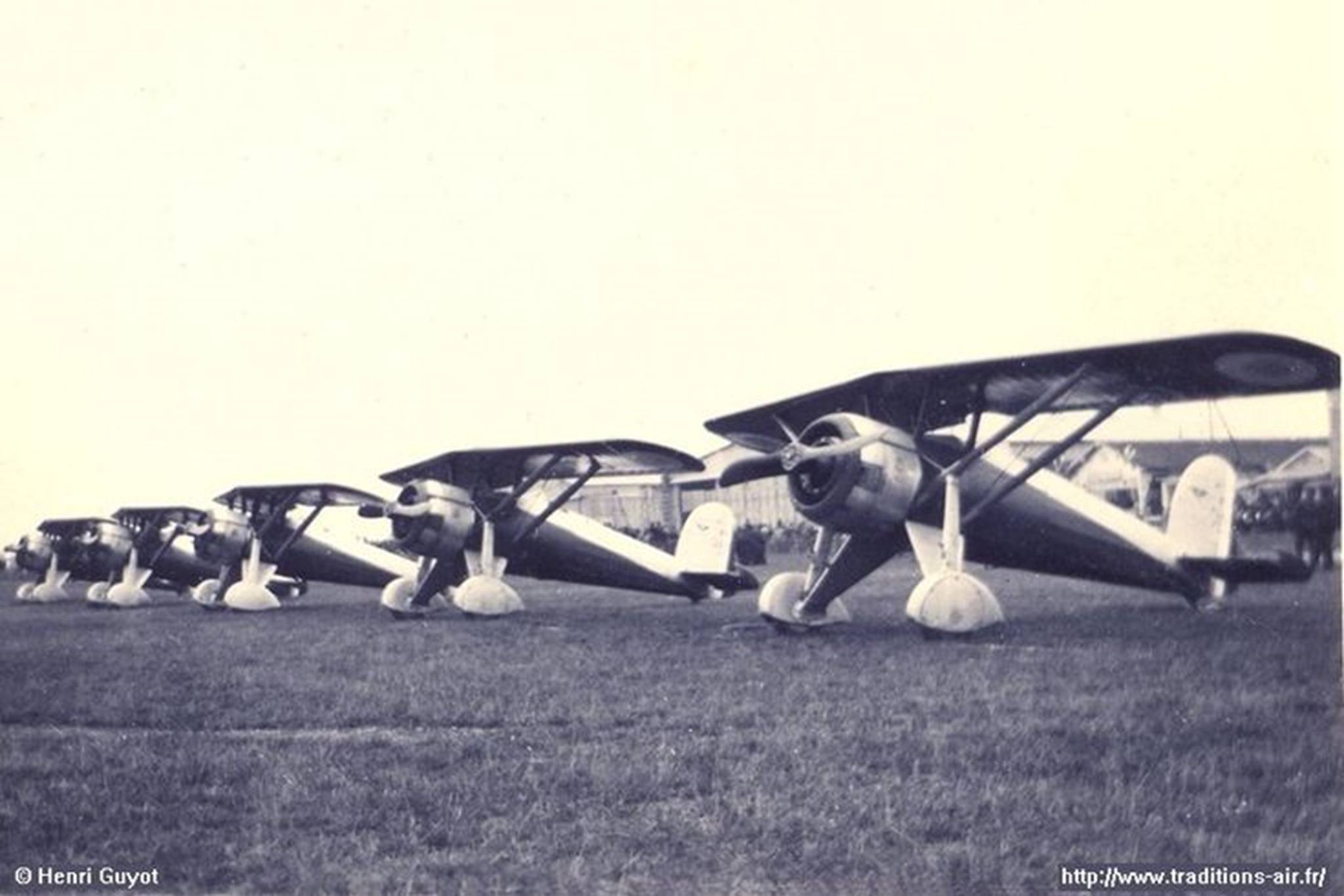
The skill of the pilots in this squadron earned them appearances at various national and international air shows. In 1935, it expanded and now had five aircraft. Two years later, it joined the Salon-de-Provence base under the name “Patrouille de l’Ecole de l’Air” (Air Force School Patrol). The Second World War interrupted its various activities.
After the war, in 1947, the EPAA, or Escadrille de Présentation de l’Armée de l’Air N°58 (Air Force Display Squadron No. 58) was created by the Ministry of Air. It was then under the command of Captain Perrier, a former pilot of the Patrouille d’Etampes, and equipped with twelve Stampe SV-4 aircraft. Given its success, the Air Force went so far as to create several patrols.
A baptism in the air
The third squadron of Commander Delachenal, based in Reims, was given the name “Patrouille de France” during a meeting on May 17, 1953, at the Maison-Blanche airfield in Algeria. It was the air show commentator, pilot and journalist Jacques Noetinger, who came up with the name.
On September 14 of the same year, the General Staff made the name official.
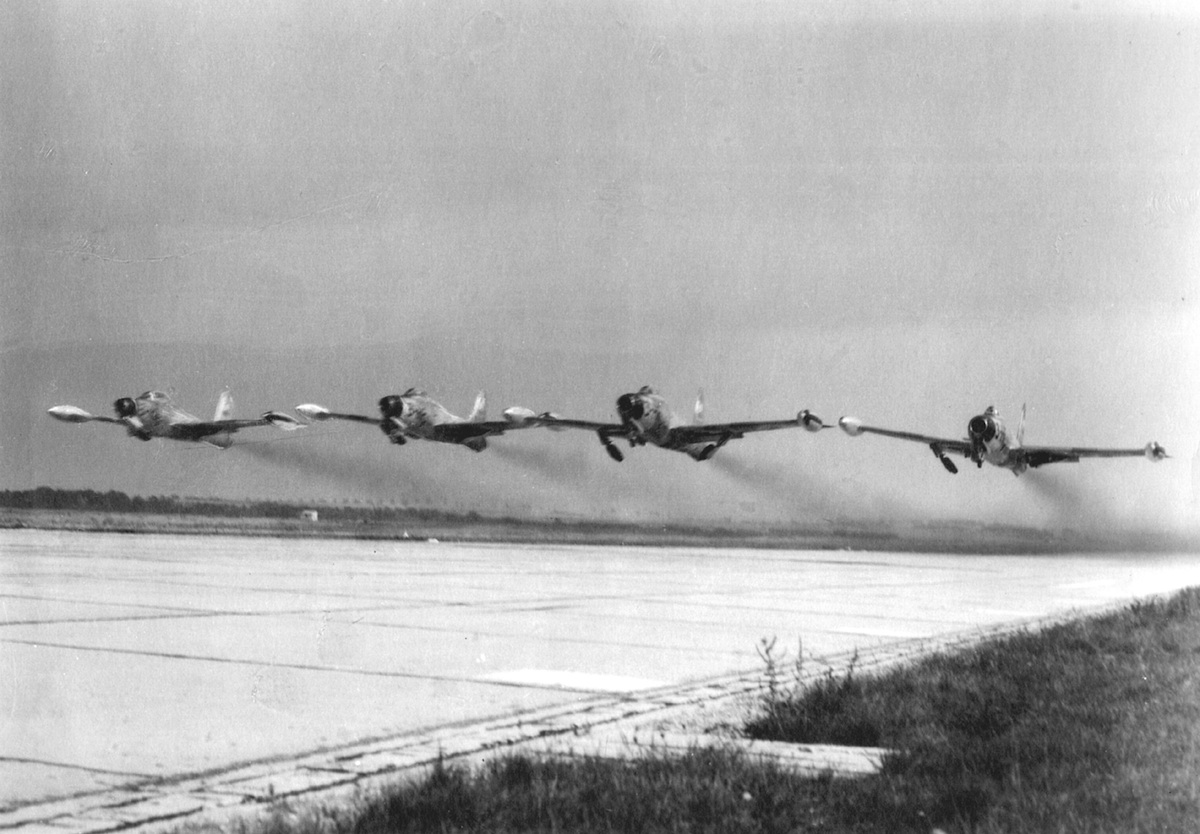
For ten years, the patrol changed squadrons four times. 1956 marked the first meetings abroad. A year later, the first smoke pod was installed. The pilots initially trained with red smoke pods, then tricolor ones in 1958.
In 1959, the second wing in Dijon was given sole responsibility for training the patrol. The patrol accompanied General De Gaulle on an important state visit in December of the same year to the former French West African territories of Senegal, Mali, and Niger.*
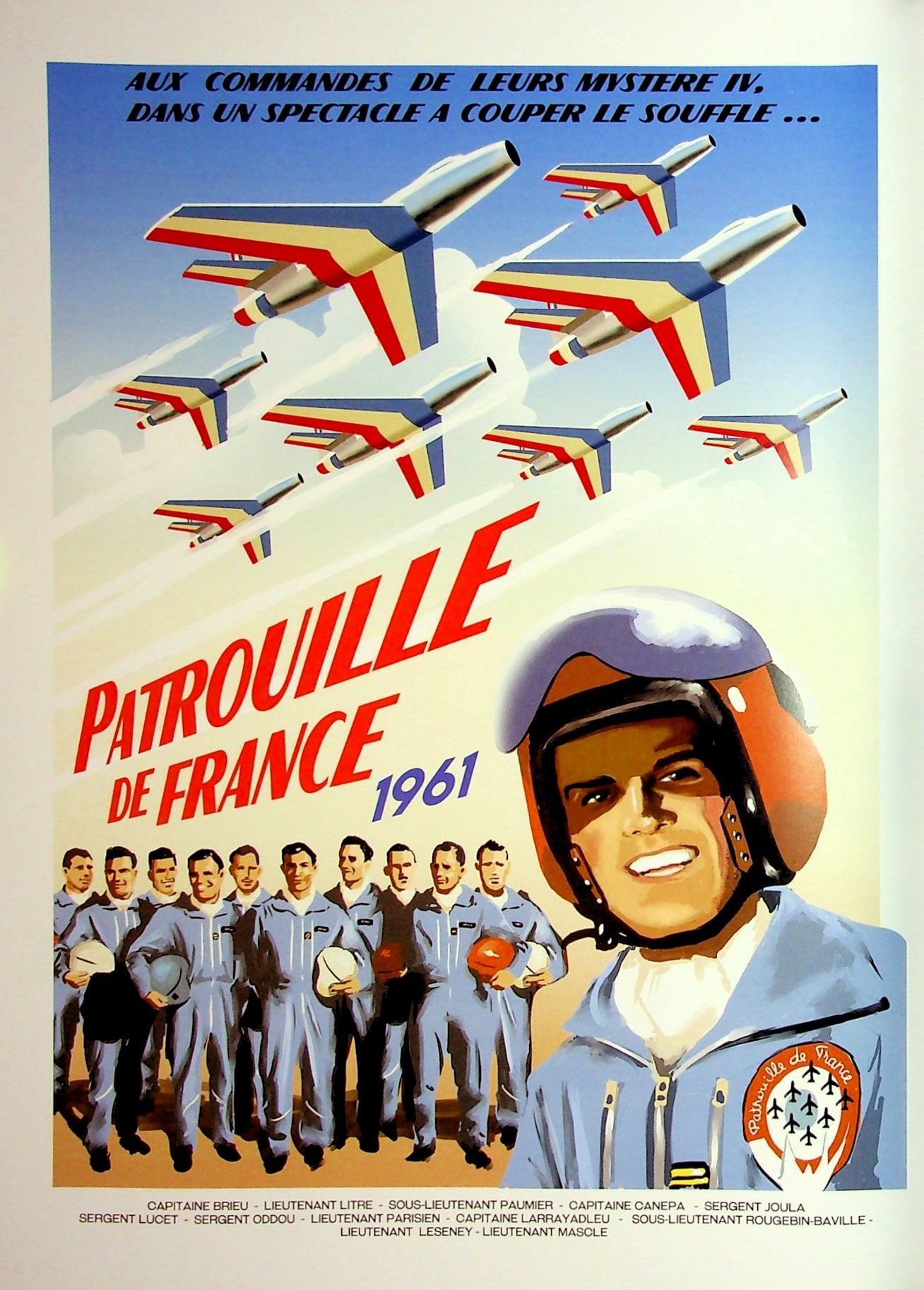
While the Patrouille de France was suffering from severe budget cuts, the Ministry of the Armed Forces managed to save the formation by retaining the Air Force Academy Patrol in 1964. The decision was made official by Prime Minister Pierre Messmer. For sixteen years, the eleven CM 170 “Fouga Magister” aircraft from Salon-de-Provence embodied aeronautical excellence.
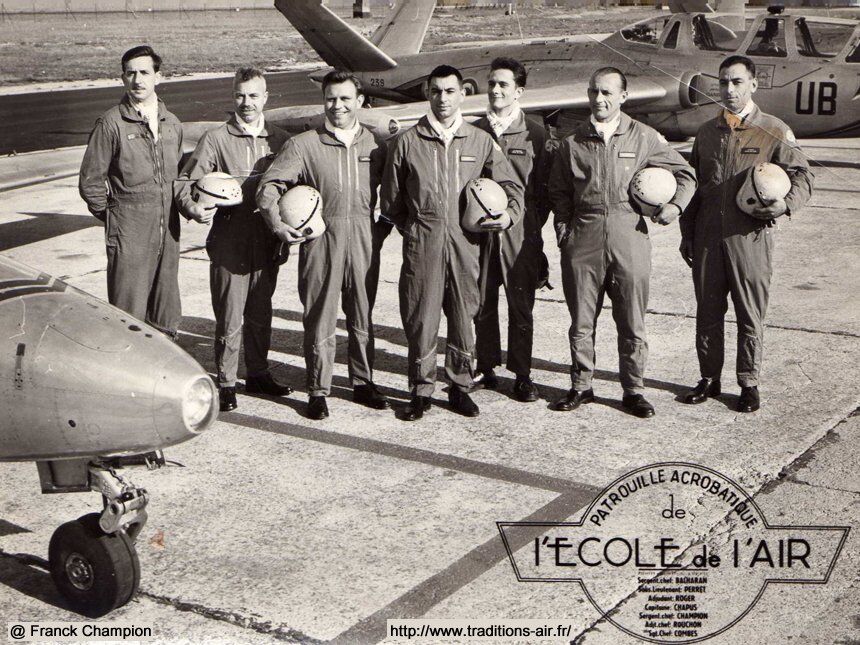
It was not until 1981 that the Alpha Jet became the Patrouille de France’s trusty steed, with seven aircraft, then eight a year later. This advanced training aircraft facilitates flights outside France thanks to its greater flight range. Outside France, the Patrouille de France notably distinguished itself in 1975 by flying over the royal palace in Marrakech at the request of King Hassan II of Morocco, and over New York in 1986. Closer to home, in 2020, for the centenary of Greater Lebanon, the patrol flew over Beirut and released green smoke, a symbol of hope.
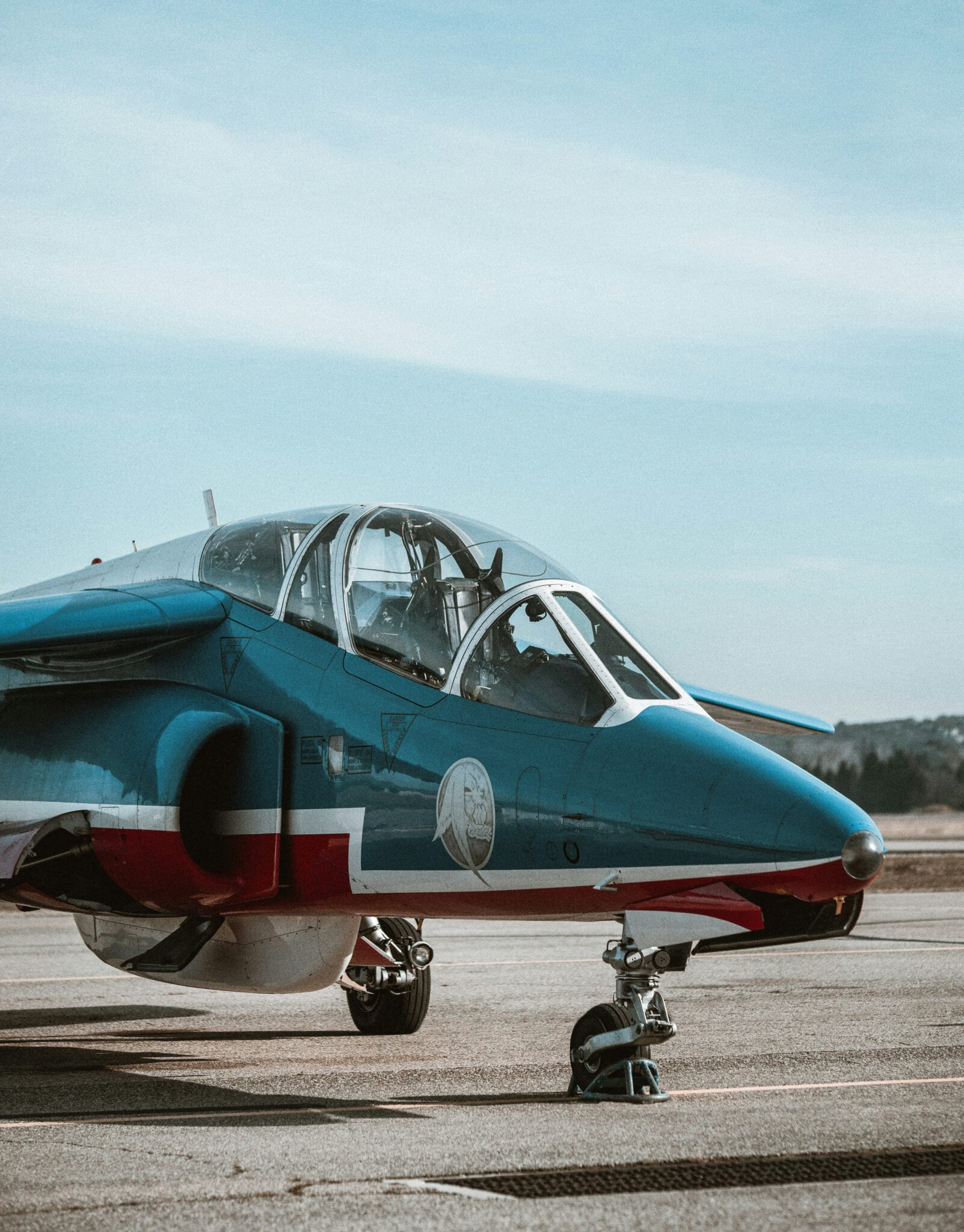
In 2022, Emmanuel Macron became the first president of the republic to fly aboard the patrol (Athos 5).
A model of cohesion
The Patrouille de France is made up of nine pilots and a staff of 80 people, ranging from mechanics to secretaries, operations agents, photographers, and communications officers.
Each year, three new pilots join the team. Recruitment is by co-optation of existing pilots, while candidates must have a patrol leader qualification and a minimum of 1,500 hours of flight time on jet aircraft.
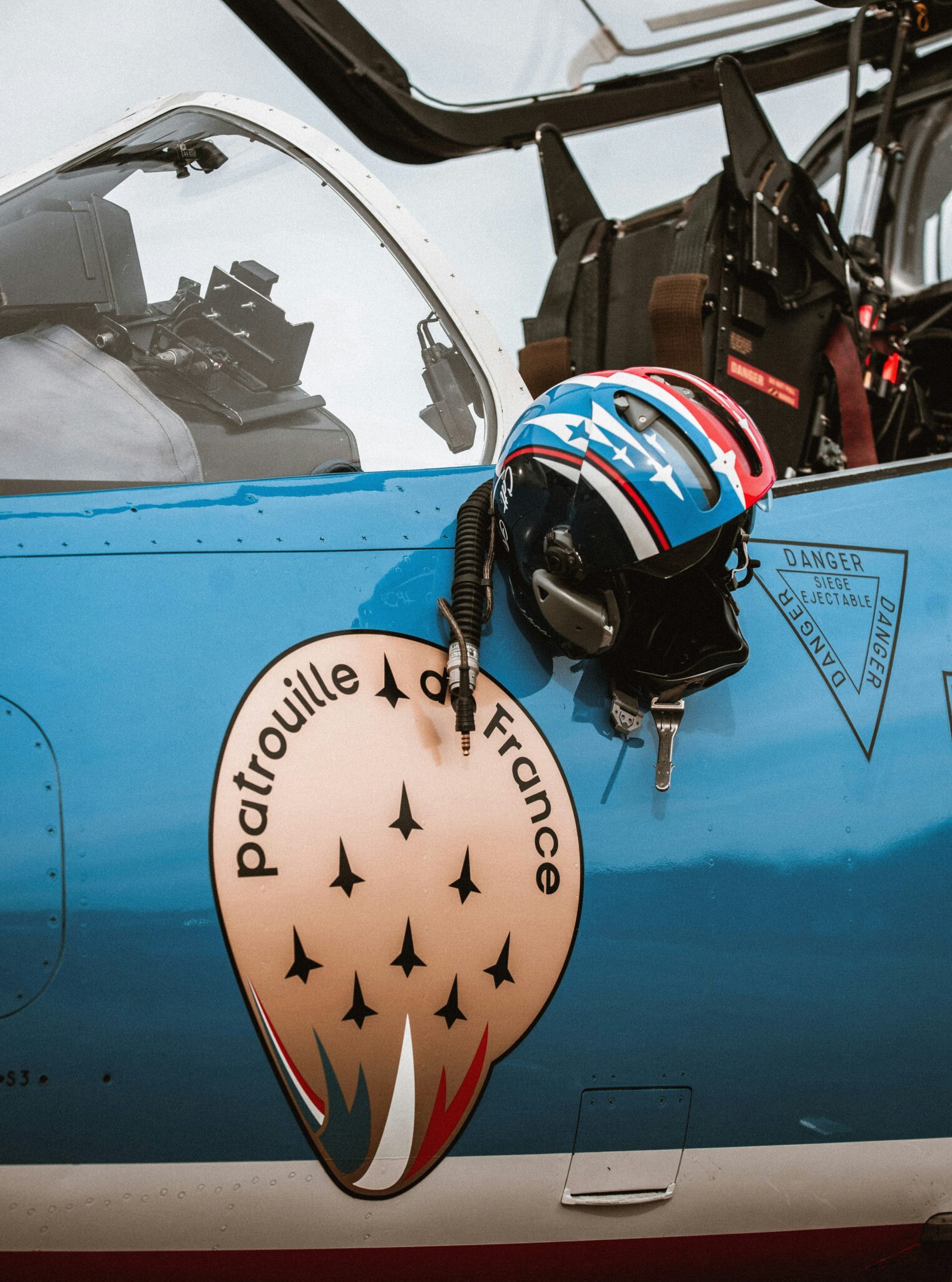
Each pilot is identified by the Athos indicator followed by a number, which indicates their respective role and rank. The Leader (Athos 1) holds his position for one year and is the true conductor of the team. He is flanked by two Interior Pilots (Athos 2 and Athos 3), both in their first year with the team. The leader is closely followed by the Charognard (Athos 4), who will become the leader the following year. The Solos (Athos 5 and Athos 6) are responsible for crossings. The Extérieurs (Athos 7 and 8) are furthest from the leader. Finally, the Remplaçant (Athos 9) is the most experienced member of the patrol, to the point where he can replace any pilot.
Flying in close formation requires high-level training. Pilots are confronted with speeds of 300 to 800 km/h at distances of 2 to 3 meters, not to mention that the sequence of maneuvers results in accelerations of -3 to +7G (gravitational force).
The Patrouille de France trains every day, at a rate of two to three flights per day, during the winter. The aim is as much to perfect flying techniques as to work on team spirit through team sports. As the patrol commander, Alexandre Richard, points out, “the call sign Athos” is a nod to Alexandre Dumas’ three musketeers, reflecting the idea that unity is strength.
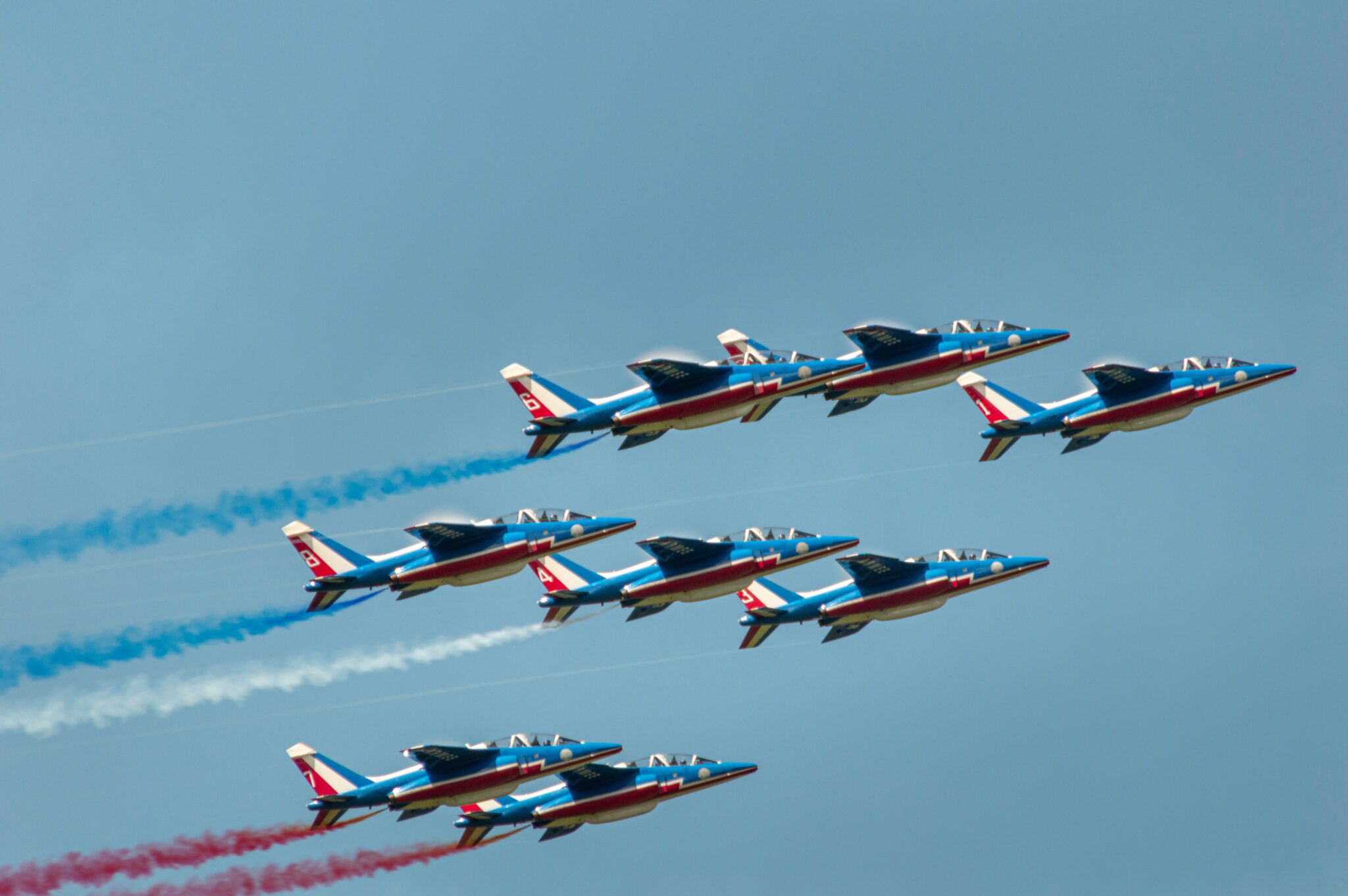
The demonstration season (around 40 per year) usually begins in May and ends in mid-October. In addition to the tour of France, there are also demonstrations outside French airspace, this year in Spain, Italy, and Romania.
Despite this intense and regular training, aircraft accidents are not impossible. The most recent incident occurred on March 22, 2025, when two French Air Force planes collided in mid-air during a demonstration in Saint-Dizier (Haute Marne). Fortunately, the pilots had time to eject from their aircraft. In the aftermath of this incident, the Patrouille de France took to social media to reiterate that it was “united, determined, and stronger than ever.” “Inspire, serve, excel, together” remain the four core values that define the Patrouille de France.
Part of the Air and Space Force, the most feminized branch of the French armed forces (25% of personnel), the Patrouille de France is slowly but surely moving towards gender parity. In November 2009, Virginie Guyot became the first woman to lead the patrol. For the current commander, Alexandre Richard, the reason why there are so few women fighter pilots is primarily because the profession has only been open to them since 1997.
Read also > The Little Story of… Fireworks: smoke flowers and colorful sparks
Featured photo: Unsplash




